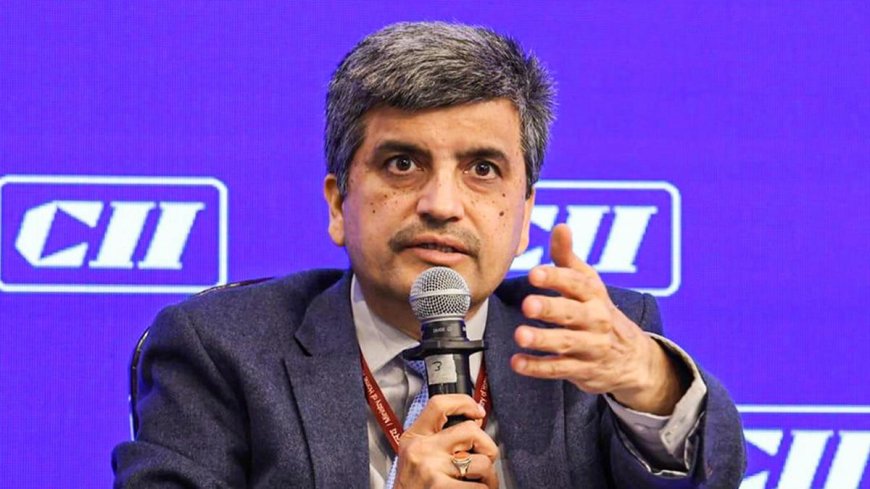U.S. tariffs could shave up to half a percentage point off India’s GDP, says Finance Secretary

Asarkari - Sarkari News, Jobs & Updates
By Priya Sharma
U.S. tariffs could shave up to half a percentage point off India’s GDP, says Finance Secretary
kam sabdo me kahein to, India's Finance Secretary has issued a significant warning, suggesting that potential tariffs imposed by the United States could negatively impact India's Gross Domestic Product (GDP) growth by as much as 0.5 percent, raising concerns amid ongoing global trade discussions.
Introduction: A Note of Caution on Trade Front
In a recent statement that has caught the attention of economists and policymakers alike, India's Finance Secretary highlighted the potential economic headwinds stemming from trade actions initiated by the United States. The assertion that US tariffs could potentially trim India's GDP growth by up to half a percentage point underscores the interconnectedness of the global economy and the significant role international trade plays in India's economic trajectory. This warning comes at a time when nations worldwide are navigating complex trade relationships and the looming possibility of protectionist measures impacting growth prospects.
Understanding the Potential Impact
The Finance Secretary's assessment points towards a tangible, though conditional, impact on India's economic output. A reduction of 0.5% in GDP growth is substantial, potentially translating to billions of dollars in lost economic activity. This impact would primarily stem from a direct hit on India's exports to the US, one of its largest trading partners. Tariffs increase the cost of Indian goods in the US market, making them less competitive compared to domestic products or imports from countries not subject to similar tariffs. This reduction in export demand can ripple through the domestic economy, affecting manufacturers, suppliers, and ultimately, employment.
The estimate, however, carries the qualifier "up to," indicating a maximum potential impact under certain tariff scenarios. The actual effect would depend heavily on the scope and magnitude of the tariffs imposed, the specific sectors targeted, and the duration for which these measures remain in place. It also depends on the ability of Indian exporters to absorb some of the cost increases or find alternative markets for their products.
Sectors Under Scrutiny
While the specific tariffs prompting the Finance Secretary's remark were not detailed in the initial statement available, historical context points to sectors like steel, aluminum, and potentially others in manufacturing and technology. Past US actions, including the imposition of tariffs on steel and aluminum and the review or withdrawal of benefits under the Generalized System of Preferences (GSP), have already created friction. If new, broader tariffs were implemented targeting key Indian export categories such as textiles, pharmaceuticals, auto components, or IT services indirectly, the impact could be more widespread. The interconnectedness of supply chains means that tariffs on intermediate goods can also increase production costs for finished goods, further dampening economic activity.
Government's Stance and Mitigation Strategies
The Indian government is acutely aware of the challenges posed by global trade uncertainties. While expressing concern, officials typically emphasize the resilience of the Indian economy and ongoing efforts to mitigate such external shocks. Potential strategies include:
- Diversification of Export Markets: Actively seeking and strengthening trade ties with other regions like the European Union, ASEAN countries, Africa, and Latin America to reduce over-reliance on any single market.
- Boosting Domestic Demand: Implementing policies to stimulate domestic consumption and investment, making the economy less dependent on export performance.
- Negotiation and Dialogue: Engaging in bilateral talks with the US administration to resolve trade disputes amicably and advocate for favourable trade terms. India has consistently sought dialogue to address specific concerns raised by the US.
- Utilizing Multilateral Forums: Leveraging platforms like the World Trade Organization (WTO) to address trade disputes and advocate for a rules-based global trading system.
- Supporting Affected Industries: Potentially offering targeted support or relief measures to domestic industries heavily impacted by tariffs, helping them stay competitive or adapt.
For more analysis on economic policies and government updates, you might want to check resources available online. For more updates, visit https://asarkari.com.
Navigating Global Trade Headwinds
The situation reflects a broader global trend where trade relationships are becoming increasingly complex and, at times, contentious. Factors like geopolitical shifts, national security concerns cited in trade actions, and domestic political considerations in various countries contribute to this environment. For India, maintaining a balance between protecting its domestic interests and fostering strong international trade partnerships is crucial. The nation's growth ambitions, including initiatives like 'Make in India' and achieving a $5 trillion economy, are significantly linked to its ability to integrate effectively with the global economy and boost exports.
The Finance Secretary's projection acts as a crucial input for policy planning, urging preparedness for potential external shocks. It emphasizes the need for proactive economic management, focusing on structural reforms that enhance domestic competitiveness and resilience, irrespective of the global trade climate.
Conclusion: Vigilance and Strategy are Key
The warning from India's Finance Secretary regarding the potential GDP impact of US tariffs is a significant reminder of the vulnerabilities inherent in global trade dynamics. While the estimate represents a potential maximum effect, it underscores the need for vigilance, strategic diversification, and continued diplomatic engagement. India's economic fundamentals remain strong, but navigating the choppy waters of international trade requires careful planning and proactive measures to safeguard growth and ensure economic stability. The focus remains on fostering domestic strengths while actively managing external relationships to mitigate risks and capitalize on opportunities in the global marketplace.
Team Asarkari
Keywords
US tariffs India GDP, Finance Secretary India economy, US India trade dispute impact, India economic growth forecast, effect of tariffs on Indian exports, global trade war impact India, India GDP growth rate, US trade policy India, India export economy, economic impact US tariffsWhat's Your Reaction?
 Like
0
Like
0
 Dislike
0
Dislike
0
 Love
0
Love
0
 Funny
0
Funny
0
 Angry
0
Angry
0
 Sad
0
Sad
0
 Wow
0
Wow
0









































